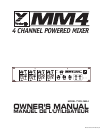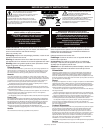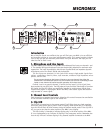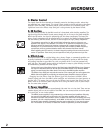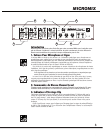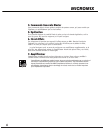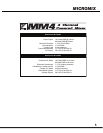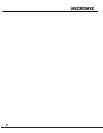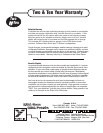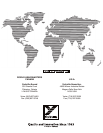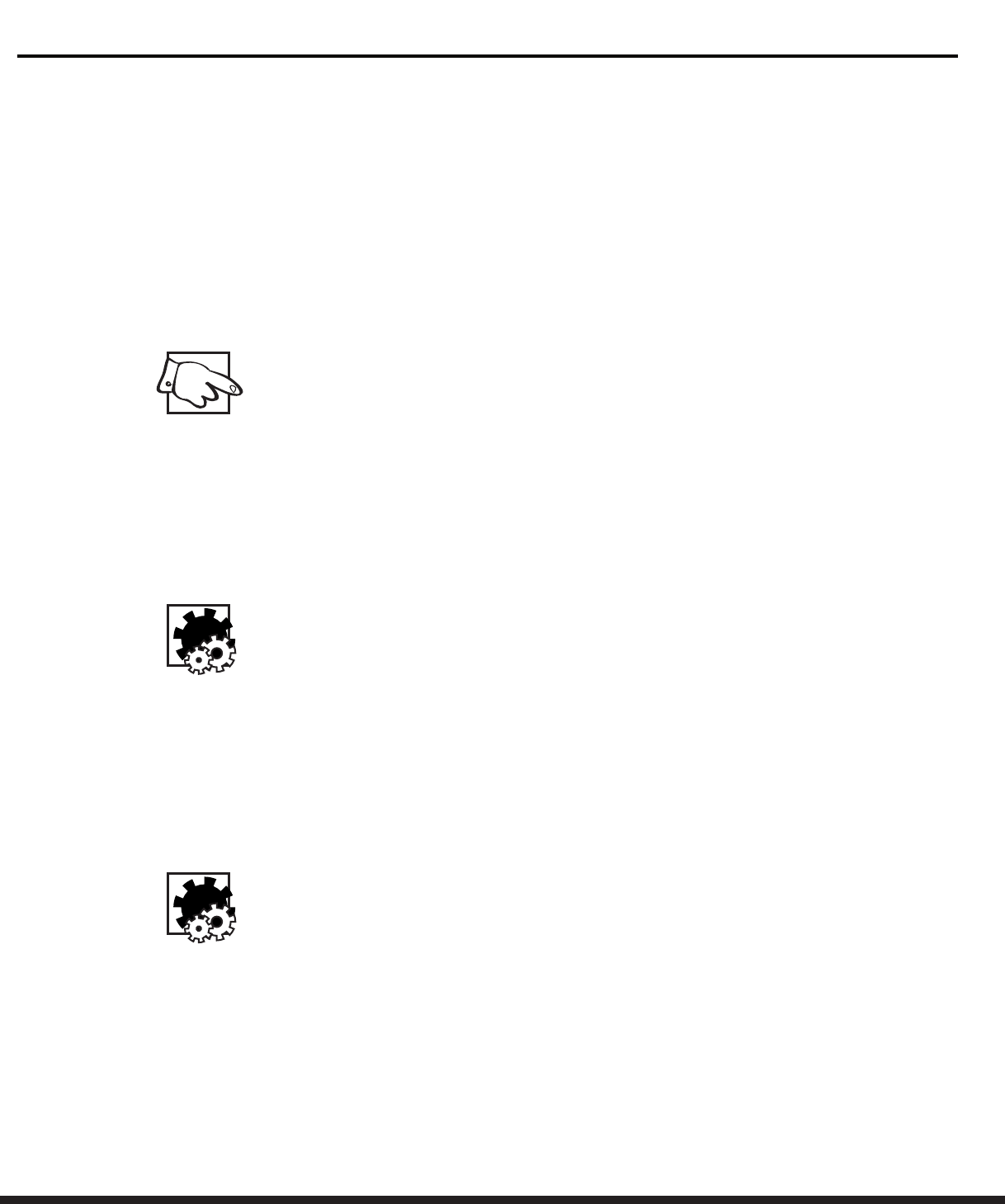
2
MICROMIX
4. Master Control
The signals from the four channels are internally routed to the Master section, where they
are combined into a mono signal. This signal is then routed to the EQ and then to the power
amplifier within the MM4. The Master control varies the level of this combined signal. The
signal level sent to the Effects Loop Send jack is also governed by the Master Control.
5. EQ Section
The tone controls provided by the MM4 consist of a three-band active shelving equalizer. The
signal arriving from the Master Control passes through this on its way to the power amplifier.
Within the EQ section, the signal is temporarily split into three components. The lowest fre-
quency (bass) components may be adjusted with to Lo control, the middle (midrange) frequen-
cies are varied by the Mid Control, and the Hi control adjusts the high (treble) frequencies.
The numbers around the Lo, Mid, and Hi dials indicate the amount of boost or cut
applied to the signal, in the decibels. The center or “0” positions correspond to a “flat”
response where the signal level remains unchanged as it passes through the EQ.
Rotating the Lo control clockwise from this position will increase the Bass frequency
components, while a counterclockwise rotation will decrease the Bass sounds.
When adjusting the EQ controls, it is best to begin by setting all three controls to their
center “0” positions. From there you can experiment until you get the sound you like.
6. Effects Loop
An external effect such as a digital delay, echo, phaser, flanger, or parametric equalizer can
be easily interfaced to the MM4. Any effect device designed to operate at 0dB line levels
will properly interface to your MM4. As a rule, any device which is not foot operated will
work just fine; “foot-pedal” devices which are designed to accept a guitar directly can often
be overloaded by standard line level signals.
Connect the input of the effect device to the Send jack of the MM4 Effects Loop. Connect
the output of the effect device to the Rtn jack of the MM4 Effects Loop. Now the MM4’s
signal is routed through the effect device on its way to the MM4’s power amplifier.
The Effects Loop Send jack may also be used as a line output jack. You can augment the
MM4’s internal amplifier by connecting an external power amplifier’s input to this jack.
Plugging into the Effects Loop Rtn (Return) jack will disconnect the MM4’s direct
internal signal path from the MM4’s power amplifier and substitute the signal present at
the Rtn jack. This means that you can use the Effects Loop to send the signal from the
MM4’s mixer to an external power amplifier while using the MM4’s built-in power ampli-
fier for some other purpose.
7. Power Amplifier
The MM4 power amplifier delivers approximately 150 watts into a 4-ohm load. There are two
speaker output jacks on the rear panel of the MM4. You can connect either an 8-ohm speak-
er to each jack, or one 4-ohm speaker.
The MM4’s power amplifier is fully protected from all abnormal load conditions. Shorting
the outputs of the MM4 will not harm the unit. The power amplifier will shut down if it
senses an improper load condition. Such a condition can result from connecting too many
speakers, (too low a load-impedance), to the MM4. In this case, the sound will be intermit-
tent as the power amplifier repeatedly tests the load to determine if it can resume opera-
tion. The solution is, of course, to reduce the number of speakers you have connected.



